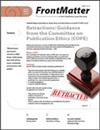同种雄性密度对雄性裂殖蛛(Banks,1911)狼蛛(蜘蛛目:狼蛛科)繁殖行为的影响
IF 0.9
3区 农林科学
Q3 ENTOMOLOGY
引用次数: 1
摘要
摘要在竞争性配偶寻找的背景下,雄性可能会使用来自同种动物的线索,如运动线索和/或求爱信号,来定位配偶。对于居住在地面的狼蛛来说,考虑到可能存在许多视觉障碍,基质传播的振动线索可能是特别重要的信息来源。本研究通过以下问题探讨了狼蛛可能使用的同种雄性线索:(i)雄性Schizocosa retrorsa (Banks, 1911)狼蛛是否使用来自同种雄性的振动线索来改变它们的搜索或信号行为?(ii)雄性能否利用同种雄性线索评估同种雄性的密度?(三)同种雄虫密度的变化是否影响焦点雄虫对同种线索的行为反应?为了回答这些问题,我们测试了(i)同种雄性的数量和(ii)同种雄性的活动(例如,求爱是/否)对焦点雄性行为的影响。我们记录了以下雄性焦点行为:(a)有无求偶行为,(b)多模态求偶信号的时间/结构信号特征,以及(c)运动模式。研究结果表明:(1)逆转录雄蛙通过对同种邻居的求偶或不求偶行为产生的振动信号来评估其竞争环境;(2)逆转录雄蛙可能通过评估与同种雄蛙密度相关的信号来改变其在寻找配偶和求爱信号之间的生殖行为。(3)密度依赖性同种求偶信号的评估和感知可作为调节繁殖行为的社会信息。本文章由计算机程序翻译,如有差异,请以英文原文为准。
The effects of conspecific male density on the reproductive behavior of male Schizocosa retrorsa (Banks, 1911) wolf spiders (Araneae: Lycosidae)
Abstract. In the context of competitive mate searching, males may use cues from conspecifics, such as movement cues and/or courtship signals, to locate mates. For ground-dwelling wolf spiders, substrate-borne vibratory cues may be particularly important sources of information, given the potential presence of many visual obstacles. This study explores the possible use of conspecific male cues in wolf spiders by asking: (i) Do male Schizocosa retrorsa (Banks, 1911) wolf spiders use vibratory cues from conspecific males to alter their searching or signaling behavior? (ii) Can males assess the density of conspecific males using conspecific male cues? (iii) Does the variation in conspecific male density affect the behavioral response of focal males to the conspecific cues? To answer these questions, we tested the effects of (i) the number of conspecific males and (ii) the activity of conspecific males (e.g., courtship yes/no) on a focal male's behavior. We recorded the following focal male behavior: (a) the presence/absence of courtship behavior, (b) temporal/structural signal characteristics of the multimodal courtship signaling, and (c) locomotory patterns. Our results suggest that, (i) S. retrorsa males assess their competitive environment through substrate-borne vibratory cues generated by courting or non-courting behavior of conspecific neighbors, (ii) S. retrorsa males may alter their reproductive behavior between mate searching and courtship signaling by the assessment of cues associated with conspecific male density, and (iii) the assessment and perception of density-dependent conspecific courtship signaling can be used as social information to adjust the reproductive behavior.
求助全文
通过发布文献求助,成功后即可免费获取论文全文。
去求助
来源期刊

Journal of Arachnology
生物-昆虫学
CiteScore
2.20
自引率
10.00%
发文量
34
审稿时长
>12 weeks
期刊介绍:
The Journal of Arachnology publishes scientific articles reporting novel and significant observations and data regarding any aspect of the biology of arachnid groups. Articles must be scientifically rigorous and report substantially new information.
 求助内容:
求助内容: 应助结果提醒方式:
应助结果提醒方式:


